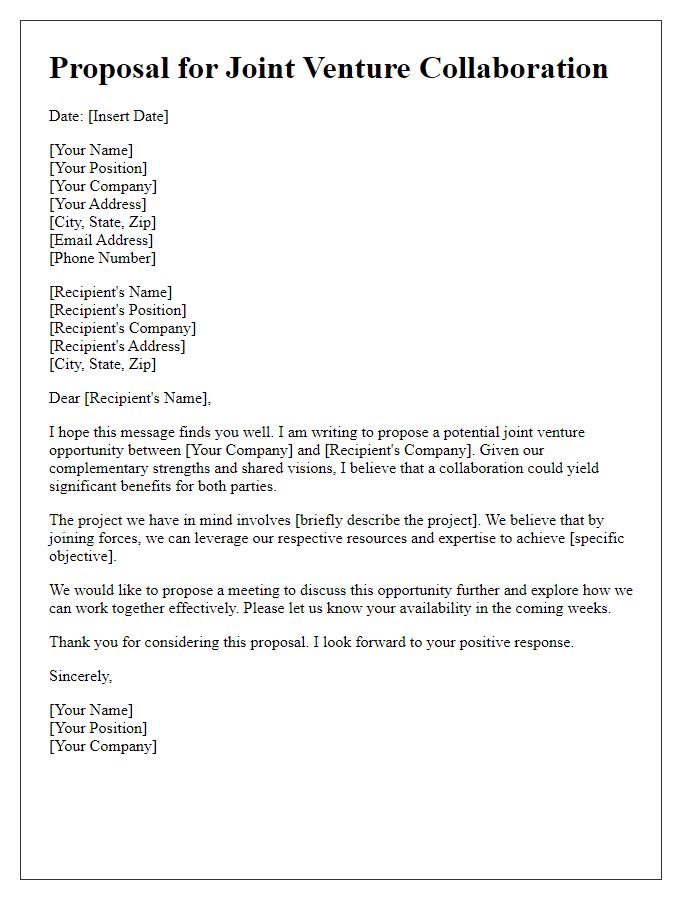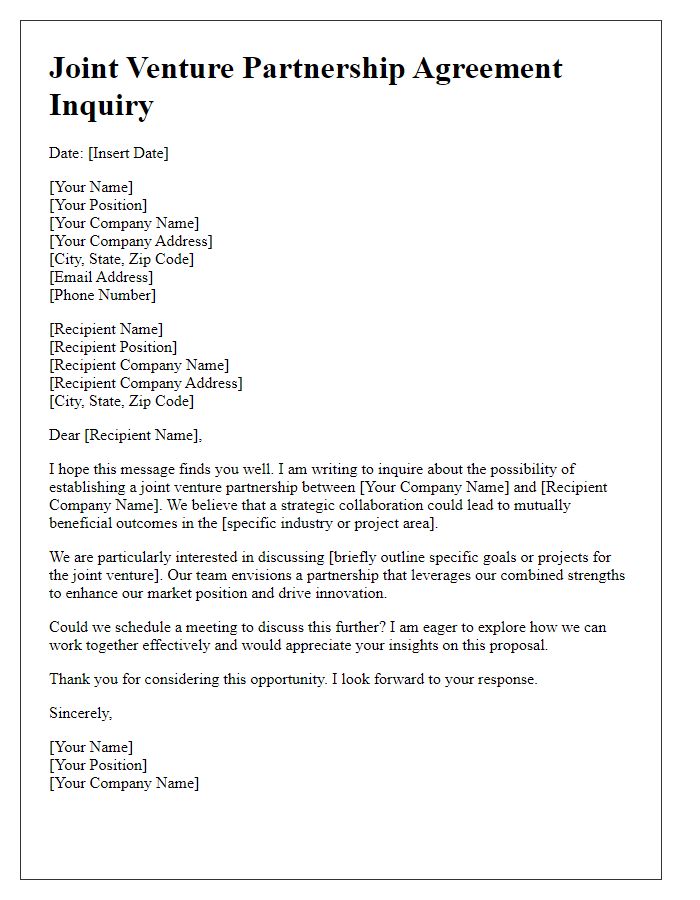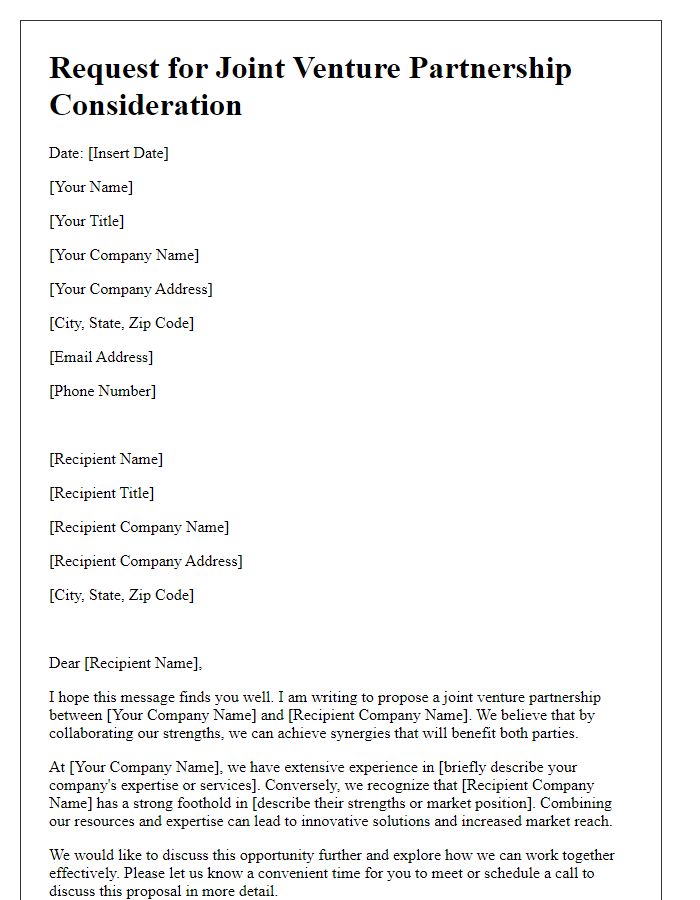Are you considering a joint venture but unsure how to draft the perfect proposal? It's essential to create a compelling agreement that clearly outlines the roles, responsibilities, and benefits for all parties involved. By establishing a transparent framework, you can foster trust and pave the way for a successful partnership. Curious about how to get started on your joint venture agreement? Read on to discover a helpful template that makes the process easier!

Parties Involved
A joint venture agreement proposal typically outlines the collaboration between two or more parties to achieve a common goal. The involved entities, such as Company A and Company B, may represent varying industries; for example, Company A, a technology firm specializing in artificial intelligence solutions, and Company B, a healthcare provider focused on telemedicine services. Each entity contributes resources, expertise, and capital to the partnership, enhancing collective capabilities. The document should specify roles, responsibilities, and contributions, along with the business objectives, such as developing an innovative health tech product targeting the aging population. Legal jurisdictions, profit-sharing ratios, and dispute resolution mechanisms are pivotal aspects that may be included to ensure a smooth operational framework and address any future conflicts that may arise.
Objectives and Goals
Objectives and goals of a joint venture agreement focus on collaboration to achieve mutual success. Establishing clear objectives, such as expanding market reach in regions like North America (estimated market growth of 5% annually) or increasing product offerings in sectors like renewable energy, are essential. Goals might include launching a new product line within 12 months, demonstrating a commitment to sustainability by reducing carbon footprint by 20%, or achieving combined revenue targets exceeding $10 million by the end of the fiscal year. Defining these objectives ensures all parties remain aligned and focused on shared outcomes during the partnership.
Roles and Responsibilities
The joint venture agreement outlines essential roles and responsibilities for collaborating entities, ensuring clarity in operations. Each partner must designate key personnel, such as project managers (typically with over five years of experience in respective industries) to oversee coordination. Financial responsibilities include capital contributions (often ranging from $50,000 to $500,000, depending on project scope) divided equally among partners unless stated otherwise in the agreement. Marketing strategies would involve shared efforts, with each partner contributing expertise in sectors like digital outreach or traditional advertising. Legal responsibilities encompass compliance with regional regulations, particularly relevant for projects in markets such as the European Union or the United States, where strict guidelines are enforced. Each party is tasked with reporting milestones and financial performance quarterly, fostering transparency and accountability throughout the venture.
Financial Contributions
A joint venture agreement proposal outlines the financial contributions necessary for collaboration between two or more parties. This includes detailing initial investments required for startup operations, specifying capital contributions from each party, such as cash amounts, assets, or services. Additionally, it may include ongoing funding commitments necessary for the project's lifecycle, projected cash flow requirements for sustained operations, and profit-sharing mechanisms related to each party's investment stake. Key financial terms need to clearly define obligations, timelines for contributions, as well as provisions for handling cost overruns or unforeseen expenses. Establishing these financial parameters within the agreement is crucial for maintaining transparency and mutual accountability throughout the joint venture process.
Termination Conditions
Termination conditions in a joint venture agreement outline the specific scenarios under which the agreement can be dissolved. Common conditions include material breach of contract, such as failure to meet financial obligations or operational responsibilities, which can lead to a dissolution process initiated by the aggrieved party. The agreement may also stipulate a timeline for providing notice of termination, often ranging from 30 to 90 days, allowing the other party to rectify breaches. Additionally, external circumstances like bankruptcy or legal incapacitation of a party can trigger immediate termination. Provisions for mutual consent offer flexibility for voluntary exit from the partnership, facilitating smooth and amicable disengagement. Furthermore, the agreement often includes clauses addressing distribution of assets and liabilities, ensuring clarity on each party's responsibilities post-termination to avoid disputes.













Comments